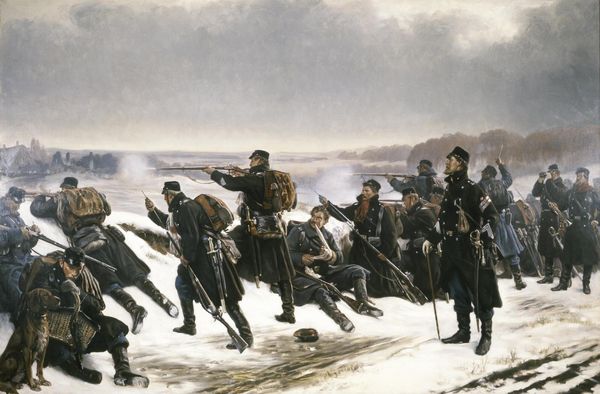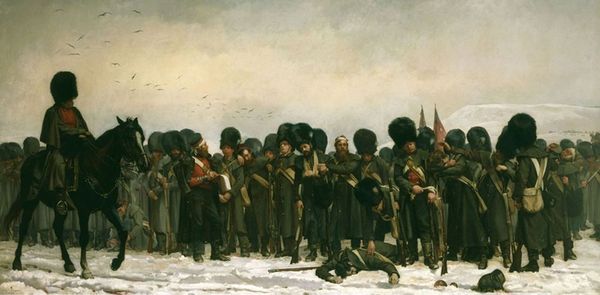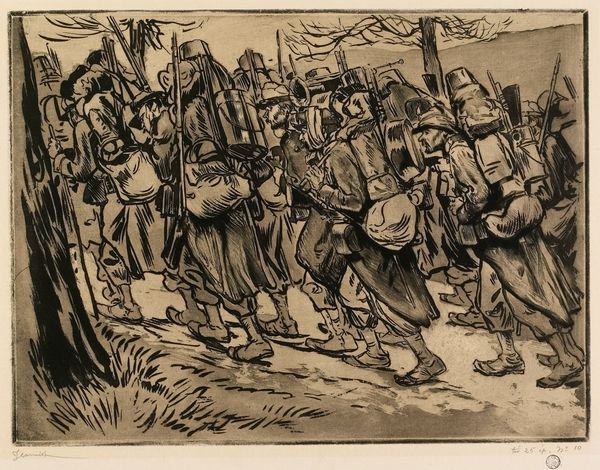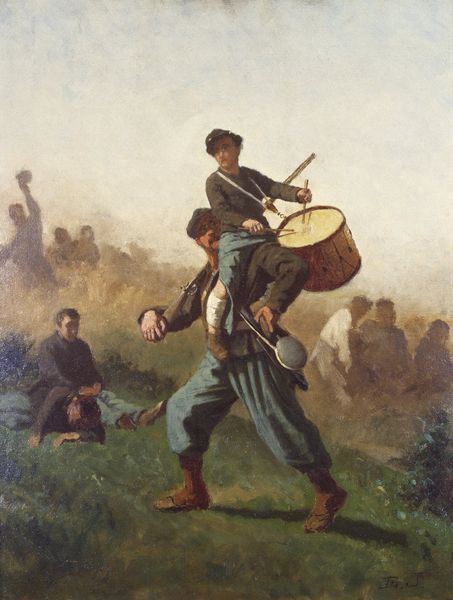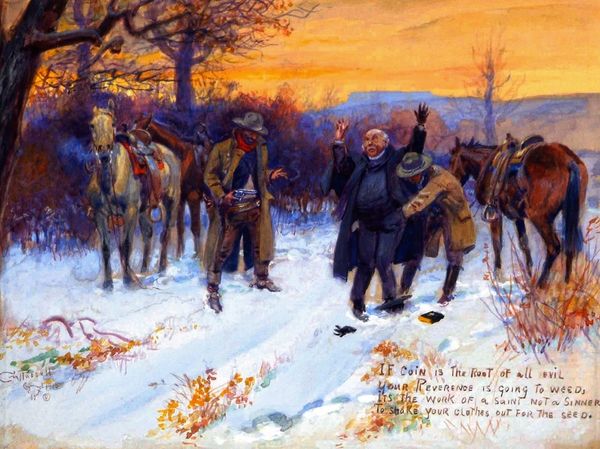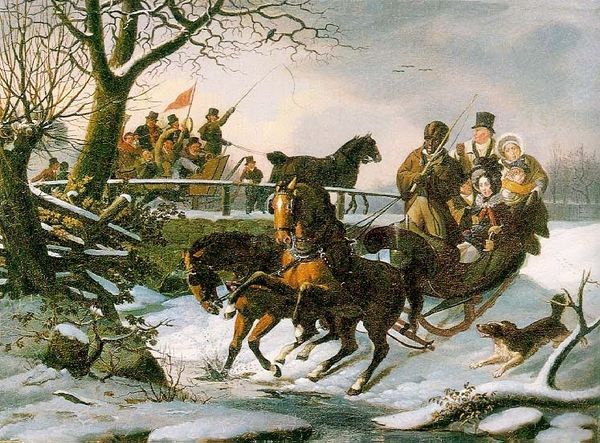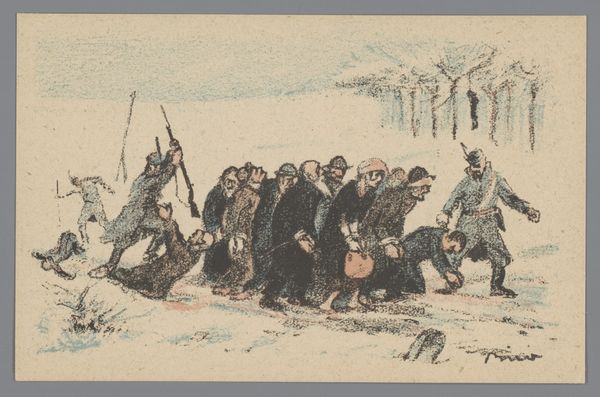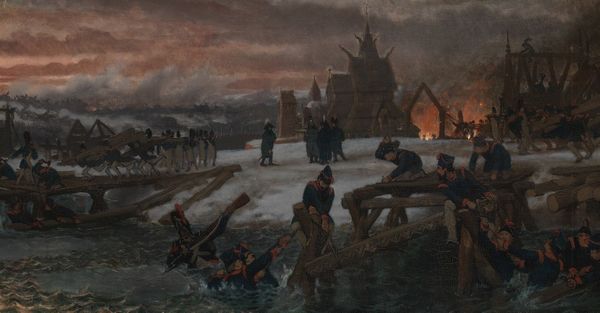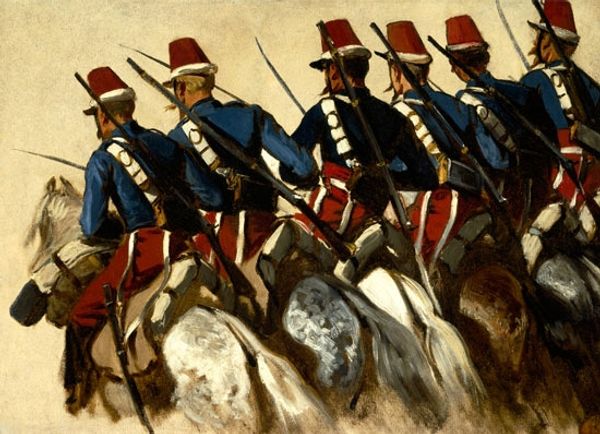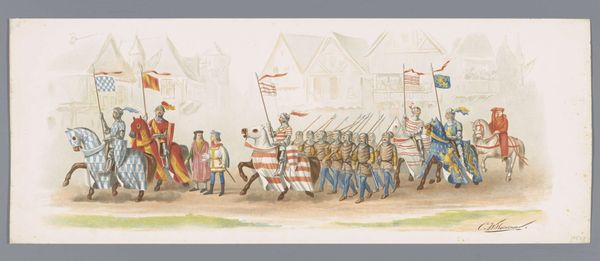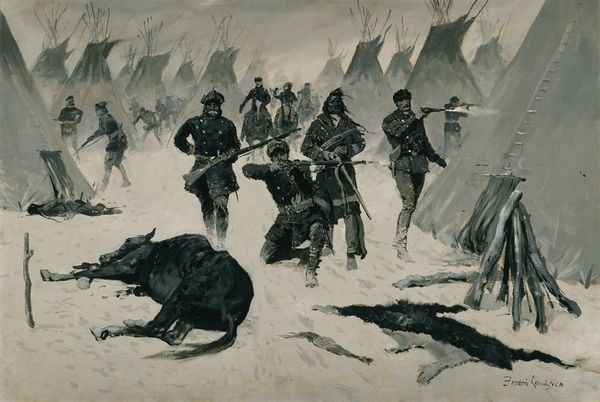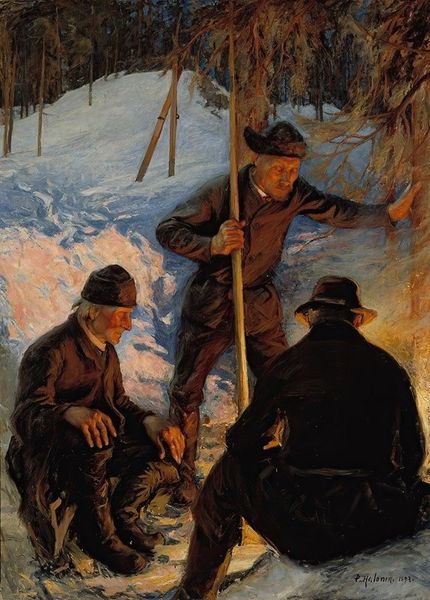
Copyright: Public Domain: Artvee
Curator: Albert Edelfelt created this imposing painting, "The March of the Björneborg Regiment," between 1897 and 1900. Edelfelt was deeply interested in portraying pivotal moments in Finnish history and culture. What’s your first impression? Editor: Bleak grandeur! A rhythmic, forward-driving inevitability in the march, undercut by what looks like an apocalyptic winter sky. They look grim, the drummers especially... almost hypnotized by their own relentless beat. Curator: Absolutely. It's worth noting that the Björneborg Regiment was one of the oldest Finnish army units, carrying a strong sense of tradition and national identity. Edelfelt focuses on this, the power of collective identity in historical narrative. Editor: And there's such a sharp contrast between the detail on those drummers, and then the almost ghostly indistinct figures behind. Like the present moment of duty, set against the foggy, unknown future. Or perhaps remembering the past wars? You can almost feel the weight of those drums, too – a constant, physical reminder. Curator: He employs a muted palette, perfectly capturing the harsh Finnish winter landscape, emphasizing the stoicism of the soldiers as they trudge through the snow. This reflects the romantic nationalist sentiments prevalent at the time. Editor: I see it, it is as if he used only grays! It’s a study in grim determination, framed by an indifferent, unforgiving nature. One almost gets the sense that the landscape and the rhythmic drumming of marching, are all as important characters in this unfolding historical drama. Curator: The painting really highlights how art was being used at the time to solidify a sense of national pride and historical awareness within Finland. Editor: Well, it worked! You know, after looking a while I don’t feel such stark dread; those drummers also symbolize a will to persevere… maybe even… dare I say… a glimmer of hope? Curator: Perhaps. Art's capacity to evoke hope amidst even the starkest settings might be its greatest asset for any society. Editor: And to see that even the greatest of struggles may yield one very great work.
Comments
No comments
Be the first to comment and join the conversation on the ultimate creative platform.
